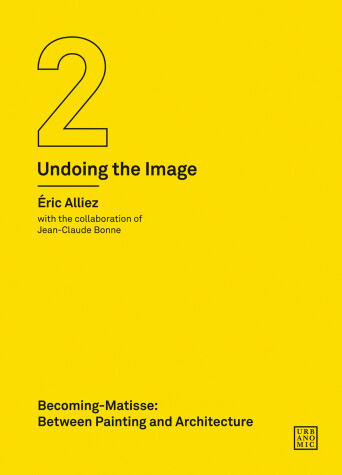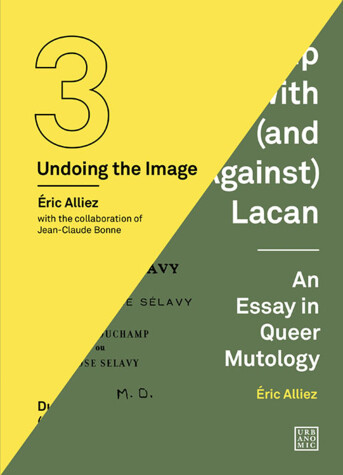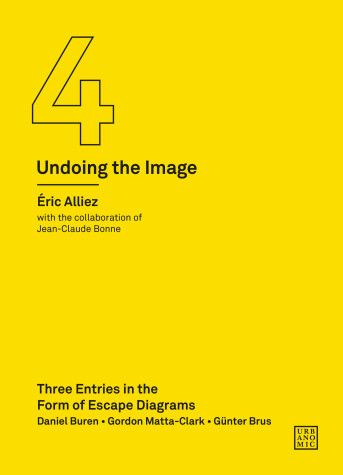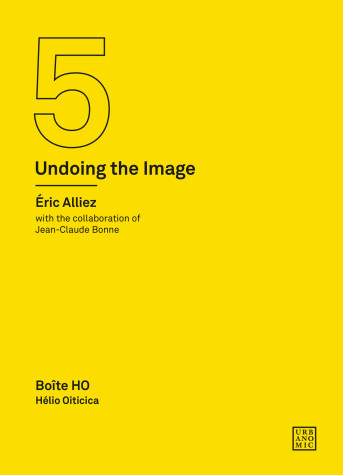Urbanomic / Art Editions
5 total works
Accused by his contemporaries of both arid overtheorisation and a hedonistic abandon to the pleasures of color, decried for a preoccupation with the merely decorative, retrospectively consigned to a subsidiary role in an official History of Art that sees the liberation of color from iconic conventions and symbolic associations as the inevitable precursor to the purified color of modernist formalis, Matisse, with his untimely singularity, his break with the History of Art, and the part he played in undoing the image is ripe for the reevaluation undertaken here with great panache by Éric Alliez and Jean-Claude Bonne, who with this volume restore Matisse to his place within the prehistory of contemporary art, while continuing to transform our understanding of the latter.
It was Matisse who, with his understanding of the construction of colours as a means of vital expression, continued to exacerbate the fauves' decisive break with Form; in doing so, he also opened up painting to its outside, by cutting out color, and releasing it onto the walls and into architecture by way of a decorativity virtually generalized to the whole environment.
With a series of detailed and compelling extended analyses of Matisse's works, we learn how “Matisse-thought” arrived at the magic formula expression=construction=decoration. This volume, the second “case study” in Alliez and Bonne's Undoing the Image, gives us a new Matisse extracted from clichés and stereotypes both popular and learned, revealing the complex function of his work and thought in contemporary art's escape from the image, from traditional forms of art, and even from the art form itself.
The first volume of Éric Alliez and Jean-Claude Bonne's major work on contemporary art begins by outlining their exploratory and speculative project: not so much to produce a new “philosophy of art” as to enter into a space in-between philosophy and art—between a contemporary philosophy of contemporary art and an art contemporary with contemporary philosophy.
But what exactly is the “contemporary”? And how can we make ourselves, philosophically, the contemporaries of works whose problematic nature no longer sits well under the categories of the “aesthetic,” inherited from romanticism?
In these case-studies of an art-thought that is inseparable from the continued construction of the very concept of a “contemporary art,” philosophical analysis is continually displaced by the forces of works and practices of creation and reception that herald a new—processual and post-conceptual—configuration of art, with Matisse and Duchamp—Matisse-thought and Duchamp-thought—establishing a tension that, since the 1960s, has been “recharged” by the micropolitical options which have given rise to the critical and clinical problematisation of art.
Moving through and beyond the thought of Deleuze and Guattari, the discovery of a diagrammatic regime of the contemporary synonymous with an undoing of the image of the aesthetic regime of art begins here with the work of Brazilian artist Ernesto Neto, as a close analysis of the diagrammatic forces at work in Leviathan Thot, Neto's major 2006 intervention in the Panthéon de la république, reveals the fundamental stakes of a contemporary art in the process of undoing the image-form.
Neto's “anarchitectural denunciation” takes on the (Hobbesian) metaphysical enunciation of the Leviathan-state, which his monstrous “counter-installation” recalls and reproblematizes by placing all of the Panthéon's physical and metaphysical coordinates into and under tension. Grappling with this foreign body both critically and clinically, Alliez and Bonne reveal how the “Neto Operation” engages with nothing less than the image of power in its relation to the power of the image that animates it and endows it with a discursive existence.
Matisse and Duchamp seem to incarnate ideal poles of the tension internal to modern art as it plunged into crisis the idea of the image—a polemical operation that opened the way to contemporary art's auto-problematization of experimental constructivism. Where Matisse subverted the aesthetic regime by bringing painting out of itself to invest its environment in a Bergsonian energetics of color, Duchamp cuts it off from the plastic arts through a reversal of Bergson's in-the-making. The readymade captures a literalized signifier of this perspective. Duchamp Looked At is an extraordinarily rich philosophical study that offers a startling new account of the dis/continuity between the problems of contemporary art and the new articulations Duchamp fabricated between image and idea, science and art, painting and language.
Alliez and Bonne's meticulous archaeological survey rediscovers the real problems and motivations of “Duchamp-thought” through a close analysis of his entire oeuvre: from the Nudes in which the problem of representing movement is gradually displaced into the realm of the virtual, the image disqualified in favor of the diagram, to the pataphysical sciences of chance and the particular, the readymades, the Large Glass and Étant donnés—and beyond, as the artist carbonizes the gallery with 1200 Sacks of Coal and ties it up with Miles of String, in installations that take Duchamp beyond Duchamp.
The late 1960s saw a radical undoing of the image in—and of—art, as the questions of art began to be posed in entirely new terms. In this critical and clinical examination of the post-conceptual condition’s negotiations with the image, the body, capitalist semiotics, and the built environment, Éric Alliez and Jean-Claude Bonne trace the trajectories of three artists, three key entries in the lexicon that are also entryways into contemporary art understood as a ‘diagrammatic regime’ inextricably related, in particular, to architecture.
Daniel Buren systematically deconstructs all the forms of autonomy of art, through a tenacious in situ critique at once pragmatic and ontological operated by his "visual tool," traced here from its origins to recent major museum installations; Gordon Matta-Clark’s anarchitectural operation across site and non-site strikes at the functional foundations of architectural structuring, physical, social, and semiotic—a dis-organization and disorientation relayed by his photographic documentation of his projects. Viennese actionist Günter Brus’s action drawings/drawing actions and "stress tests" recircuit markmaking, representation, and corporeality, producing wordless "electroglyphs" that render visible the inscription of relations of force within the body.
This "operating manual for contemporary art," richly illustrated and based throughout on close readings of the artists’ works, writings, and actions across their entire careers, is an indispensable diagram of the lines of flight opened up by contemporary art, as well as the omnipresent threat of its capture by anesthesia and dematerialization, spectacle, the dogma of “site-specificity,” and absorption into the neoliberal experience economy.
“The IMAGE-grip is dislocated and a more fundamental element emerges: in short, IMAGE is not the work’s supreme motive or unifying end.”—Hélio Oiticica
At the turn of the 1950s–1960s, one of the leading artists of Neo-Concretism, Hélio Oiticica, presaged the unique trajectory of Brazilian contemporary art with his intensive color-architectures. In the wake of this vivência of “time-color,” which subordinates the aesthetic to the sensorimotor powers of color, Oiticica’s transcategorial, transmedia works critically and clinically undermine physical and social architecture, while semiotically subverting the forms of domination exerted by the image.
In this culmination of their reassessment of the relation among art, philosophy, and the contemporary, Éric Alliez and Jean-Claude Bonne show how these works are exemplary not only of a truly diagrammatic thought and practice, but also of the South’s resistance against the coldly indifferent globalism endemic to the pacified institutions of contemporary art. Oiticica’s tropicalization of the commonplaces of sixties art signals the latent potential of a marginal dissidence from both the aesthetic form of art and the conceptual form of anti-art.




